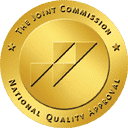5 Skill Levels of Development in every Cath Lab
 This series of articles is published with permission from Douglas Langager, RCIS. Doug graduated from the Navy’s cardiopulmonary program in Bethesda, Maryland, in 1975. From 1983-1988, the cardiac catheterization program at Brooke Army Medical Center, Fort Sam Houston, Texas, was under his care. After retiring from the Army, he worked as both a supervisor and staff educator at Providence Hospital in Portland, Oregon, and University Hospital in Augusta, Georgia. Mr. Langager then worked at Berkeley Medical Center in Martinsburg, West Virginia, and recently retired from patient care. He continues an active relationship with the cardiovascular community through education and thought leadership.
This series of articles is published with permission from Douglas Langager, RCIS. Doug graduated from the Navy’s cardiopulmonary program in Bethesda, Maryland, in 1975. From 1983-1988, the cardiac catheterization program at Brooke Army Medical Center, Fort Sam Houston, Texas, was under his care. After retiring from the Army, he worked as both a supervisor and staff educator at Providence Hospital in Portland, Oregon, and University Hospital in Augusta, Georgia. Mr. Langager then worked at Berkeley Medical Center in Martinsburg, West Virginia, and recently retired from patient care. He continues an active relationship with the cardiovascular community through education and thought leadership.
This article is the first in a series of 3 articles by Doug that will discuss cardiac cath lab hiring and orientation from start to finish. Originally published in Cath Lab Digest in 2006 and 2019.
Webster’s Dictionary defines orientation as familiarization with and adaptation to a situation or environment. Over the past 20 years, I have been involved in training cath lab techs and nurses in some capacity or another. Throughout my total 30 years of cardiac catheterization experience, I have found one of the greatest deficiencies across labs to be the variation and disjointedness of the new hires’ orientation process. The orientation models currently in use typically leave new hires feeling overwhelmed. Many labs have adopted a sink-or-swim orientation process where definitive, didactic training plans are frequently thrown aside in favor of lab time. Physician demand laboratory time and the patient load requires efficiency, job knowledge, and manual and intellectual dexterity. Given current working conditions and employee expectations, new employees are required to develop quickly, since time is a muscle in emergency cardiac medicine.
In many cases, time spent on training is viewed as an annoyance that slows things down. Preceptors have limited time to develop the skills required for independent (on-call level) work. Many excellent nurses or technologists are rendered ineffective as preceptors because they are not given the skills or tools to teach, guide, and evaluate a new team member. The transition from a new employee into an accepted cath lab team member should be easier than it is. Our goal should be to make the new employee’s first impression a positive one.
This series will discuss some concepts and experiences that may help preceptors and trainees alike have a more positive learning and training period. In my experience, an interview for a position in a cardiac catheterization laboratory is similar to a casting call or signing up for a tryout. When you come on board for orientation, you are still trying to make the team. During the orientation process, the employee receives specialized training that helps them adapt and become familiar with the cath lab environment. Upon conclusion of orientation, it is expected that each individual will be a contributing member of an amazing medical team. As a youngster, I dabbled in sports, with basketball being my favorite. Watching the beauty of a fast break the synchronized movement of the players, and the exacting execution of a well-run play was always something to behold. To the inexperienced observer, basketball may look chaotic. It takes time and experience to play at the feverish pace of a basketball game and switch from zone defense to man-on-man.
Basketball is a wonderful analogy for the cath lab team since many basketball themes hold true when you look at how nurses and technologists perform their jobs. Players on a team execute plays, rehearse, practice on the court, and most importantly, function as a well-oiled machine. On a successful team, teammates know the skills, weaknesses, and personal attributes of themselves and every other player, and they use this knowledge to succeed. New employees will not be able to focus on their jobs until they feel familiar with their surroundings, and routines and understand the flow of the game. Each employee, or player, has had a preceptor, or coach, to guide them through the challenges of being a new cath lab member.
We all started out as rookies, became experienced players, and strive to refine our skills as we become seasoned veterans. In order for a new employee to start out on the right foot, it’s important that the preceptor understand the levels of skill development through which their rookie will transition.
5 Basic Skill Levels of Development, Every Cardiac Cath Lab Employee Progresses Through :
- Novice: Focused on concrete, objective assessment data, the employee relies on rules and procedures.
- Advanced Beginner: Begins to think in terms of guidelines rather than strict rules.
- Competent: Nurse/tech able to manage and organize much of the clinical aspects, but may miss some subtleties.
- Proficient: Sees the situation as a whole, has the ability to recognize patterns based on experience and an aggregate of knowledge and responds to subtle cues.
- Expert: Has the ability to go beyond the rules. Maintains awareness through integration of theory and intuition. Able to zero in on the essence of the clinical situation. Fully engaged and involved, allowing this individual to feel one with the experience.
As the new hire progresses through the five skill levels, it is imperative that the preceptor understand that a transition in knowledge will also occur. Every employee starts out working on the basics. Just as a basketball player must first learn to dribble before they can play, a cath lab member must first be grounded in the basic knowledge of anatomy, physiology, patient care, and critical thinking. Once the basic knowledge has been established, the employee will move away from reliance on abstract principles and toward the use of past experience to solve problems. Next, a change in perception occurs as the employee moves from seeing bits and pieces of information to seeing a complete whole and at the same time, understanding which parts may be relevant. Last, a move occurs from detached observer to involved participant. If preceptors are familiar with the concepts of how basic knowledge is acquired and skills progress, they will be better able to adequately support their preceptee. Along with these concepts, the use of a basic clinical evaluation criterion may be useful for both the preceptor and preceptee. Table 1 provides a structured evaluation method that enables new hires to set standards for performance and improvement. In the event of a deficiency, criteria may be reviewed and improved upon. Just as it is much easier to hit a stationary basket in basketball, it is our job as preceptors to provide a stable, structured environment that allows growth and development for new hires.




